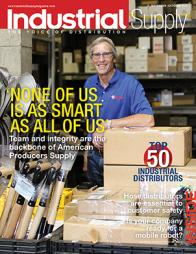Try before you buy

How to handle the 'try out' order
By Troy Harrison
Okay, we’ll give you a shot. Is there any phrase that can so give a salesperson joy and
exultation, and at the same time strike fear in his heart? If there is, I probably haven’t
heard it. When we hear this sentence, we know that we’re about to receive a “try-out order.”
The try-out order is all high stakes. High risk and high reward. If you handle the order correctly, you might have a good start on a long and prosperous relationship. If you make a mistake on the order, you will definitely lose the opportunity. Here are five “must-do’s” to enable you to handle the try-out order correctly, and get off to a good start with your customer.
Understand the situation: You already know that a try-out order is stressful for you. Here’s a little secret you may not have considered: the try-out is just as stressful for your customer. A try-out order means that a change is being made to the status quo – whether it’s the purchase of a new item or service, or a replacement of a vendor. Part of your job as a salesperson is to help the customer manage and alleviate that stress.
Get the team on the same page: Most likely, you’re not the only one involved in making a positive result happen for the customer. First and foremost, you must get everyone on the team on the same page, and singing from the same songbook. Metaphors aside, help your team (hopefully with the aid of your manager) to understand the importance of making this first order an absolutely amazing, exceed-all-expectations experience for the customer. Of course, we want all of the customer’s orders to be that way, but without excellence on the try-out, the rest won’t happen.
Manage expectations BEFORE the sale, not after: The worst thing that you can do is to attempt to ‘manage the customer’s expectations’ post-sale. This once happened to me; I was purchasing a marketing program. The salesperson was off-the-hook excited about the success we were going to have. Then came the conference with the implementation team, and the head of the team spent a lot of time dialing back the projected chances of success. When I threw up the alarms, he said, “Hey, I’m just trying to manage your expectations.” I told him that I’d rather cancel the order. “Managing expectations” past the sale smacks of bait-and-switch, and we don’t do that in ethical selling. The customer’s expectations should be locked in before a PO or check is cut.
Be present as much as possible: On a try-out order, you should be involved as much as possible. One issue with my experience in the prior example was that the salesperson did a full handoff after I sent the check. While that might not be his intent – he was accessible afterward – it did lead to the issues with ‘managing expectations.’ Early on, be a part of as much of the fulfillment process as possible, and let your team know what the customer expects and why.
Communicate, communicate, communicate: The customer should know exactly what will happen, when it will happen, and how it will happen – and the customer should be communicated with at every stage of the fulfillment. A customer left hanging is a customer that has a chance to get angry or annoyed – and that’s where buyer’s remorse sets in. Remember, part of your job is to manage the customer’s stress. That means communicating early and often. If the customer has a question, don’t let him go home without an answer.
Be on time, every time: Timing – as in promptness and meeting deadlines – will never be as important as it is on the first order. Make sure that you meet every deadline, and if you can’t, let the customer know why BEFORE the deadline hits, not after. In my example, multiple deadlines were not met, so I had more than one opportunity to be annoyed.
Celebrate the success: After you hit all your marks on the first order, you absolutely must celebrate the successful order TWICE. Once with your internal team, and once with your customer. Celebrating with your internal team builds relationships and goodwill with your team. Celebrating with your customer allows you to start the process of building toward the next order.
Winning the first order isn’t easy. It can be difficult, because there are so many moving parts involved. It’s tempting to just put the order through your normal process, but you have to avoid that temptation. You can always move back to your normal process – but if you don’t excel on the try-out, it’s not going to matter.
 Troy Harrison is author of “Sell Like You Mean It!” and president of SalesForce Solutions, a sales training, consulting and recruiting firm. For booking training, consulting or to sign up for his weekly E-zine, call (913) 645-3603, e-mail TroyHarrison@SalesForceSolutions.net or visit www.SalesForceSolutions.net.
Troy Harrison is author of “Sell Like You Mean It!” and president of SalesForce Solutions, a sales training, consulting and recruiting firm. For booking training, consulting or to sign up for his weekly E-zine, call (913) 645-3603, e-mail TroyHarrison@SalesForceSolutions.net or visit www.SalesForceSolutions.net.
This article originally appeared in the May/June 2015 issue of Industrial Supply magazine. Copyright 2015, Direct Business Media.













